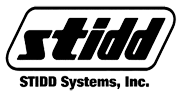Stidd Systems announced it is upgrading its submersible craft to provide more speed, range and payload capability.
The Diver Propulsion Device-XT (DPD-XT) will provide those advanced capabilities for SEALS as they slip unseen underwater toward mission objectives.
DPD-XT also boasts two independently redundant propulsion systems.
According to Stidd, all enhancements were incorporated into the submersible While still maintaining its exterior dimensions and US Navy certifications.
Submersibles allow SEALS to move from ship to a mission objective ashore, or to an underwater objective, Without a long and tiring swim.
Using a submersible also means that the SEALS don’t have to endure the cold of ocean waters for nearly as long as if they swim to the objective, so that the special operators arrive at the fight without being exhausted.
Those Stidd submersible advancements also come as SOCOM is likely to focus increasingly on providing better submersible technologies to SEALs.
James Cluck, acquisition executive with Special Operations Command, said recently that after a decade of wars on land in Afghanistan and Iraq, it is time for SOCOM to focus on undersea capabilities for SEALS.
"We spent the last ten years without the sea in SEALS," he said. "We have got to get back to a focus on maritime special ops capabilities, and that means a renewed focus on undersea those systems."
He recalled that a catastrophic fire struck an earlier undersea trans- port platform, the Northrop Grumman advanced seal delivery system, in December 2008.
"We lost our capability," he recalled, so the focus now must shift to the joint multi-mission submersible, a program that has continued for more than three years.
For lack of money, SOCOM dropped plans for a dry combat submersible-Iight plus a dry combat submersible-medium, and settled for just the medium undersea SEAL transport.
Working with the Naval Sea Systems Command, "our intent would be to build a prototype," Gluck said.

